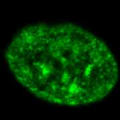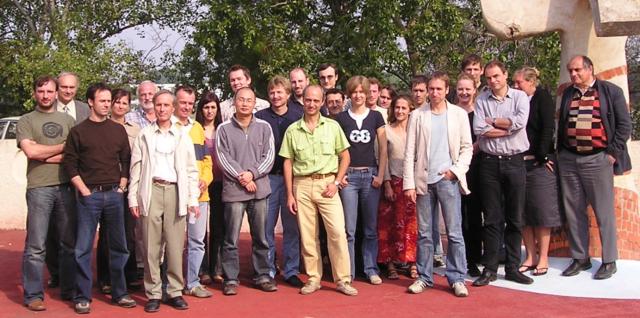
FP6 3DGENOME project
 Understanding molecular mechanisms that underlie regulation of genes is a key target in modern medical sciences and biotechnology. Our knowledge about gene regulation at the single gene and the epigenetic level is rapidly expanding. However, our understanding of the role in gene control of the three-dimensional folding of the genome in the cell nucleus, is still poorly understood; this despite the fact that considerable evidence is available showing that large-scale chromatin organization plays an important role in gene control in higher eukaryotes. 3DGENOME has the ambition to force a breakthrough in our understanding of the relationship between the function of the genome and its dynamic 3D structure in the cell.
Understanding molecular mechanisms that underlie regulation of genes is a key target in modern medical sciences and biotechnology. Our knowledge about gene regulation at the single gene and the epigenetic level is rapidly expanding. However, our understanding of the role in gene control of the three-dimensional folding of the genome in the cell nucleus, is still poorly understood; this despite the fact that considerable evidence is available showing that large-scale chromatin organization plays an important role in gene control in higher eukaryotes. 3DGENOME has the ambition to force a breakthrough in our understanding of the relationship between the function of the genome and its dynamic 3D structure in the cell.To this end the consortium will analyse the 3D structure of the human genome in the cell nucleus and relate this to its transcriptional activity. Structural analysis is carried out by fluorescent in situ hybridization (FISH) in combination with advanced 3D light microscopy. Large-scale chromatin structure of selected chromosomes will be determined in three different cell types, differing in gene expression. Gene activity along the chromosomal fibre will be read from the human transcriptome map and correlated with structure. Work on human cells will be expanded to mouse and Drosophila, aiming at establishing causal and evolutionary conserved relationships between 3D genome structure and genome activity.
Results will give new and important insight into how the eukaryotic genome in general, and the human genome in particular, operates inside the living cell. This program will lay the groundwork for understanding how, beyond the regulation at the individual gene level, large-scale chromatin structure affects the complex gene regulation networks in normal and deceased cells.

